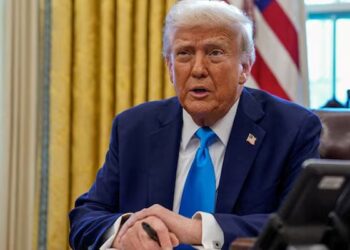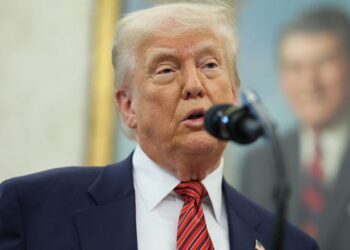Understanding India’s Protectionary Tariffs: An In-Depth Analysis
In the realm of international trade, tariffs play a crucial role in shaping the dynamics between nations. Recently, President Donald Trump announced reciprocal tariffs aimed at aligning trade barriers between the U.S. and its trading partners. This decision particularly impacts India, which stands as one of the most highly tariffed major economies in the world. In this article, we will delve into the implications of India’s protective tariffs, recent changes, and areas of contention in trade negotiations.
India’s Tariff Landscape
Overview of Tariff Rates
India’s average tariff rate has been a topic of discussion globally, especially in light of ongoing trade negotiations with countries like the United States, the European Union, and the United Kingdom. As of early April, India has a reported average tariff rate of approximately 10.6%, a drop from the previously higher rate of around 11.5%. This decrease follows the Indian government’s decision to eliminate peak tariffs between 100-150% on specific imports such as bourbon whiskey and significantly reduce the tax on motorcycle imports from 50% to 30%.
Specific Tariff Categories
While these actions seem progressive, India’s tariffs remain comparatively high, particularly when juxtaposed with those in North America and Europe. The U.S. Trade Representative’s latest Foreign Trade Barriers report highlights several key areas where India imposes substantial tariffs:
- Automobiles: Auto imports face an average tariff of 28%, with certain vehicles attracting even higher rates.
- Agricultural Products: High tariffs on goods like vegetable oils, coffee, and rubber create a challenge for trade, incurring penalties that can reach up to 20%.
- Beverages and Tobacco: The tariff rates on alcoholic beverages and tobacco products are notably elevated.
- Minerals and Petroleum: Despite India’s defense of lower rates in these categories—averaging around 10%—there remains a disparity in the overall tariff structure impacting various import sectors.
Recent Changes and Their Implications
Trade Negotiations and Tariff Adjustments
The timing of India’s tariff adjustments coincides with critical trade negotiations. The decision to lower tariffs was partly driven by the need to maintain favorable relations with trading partners, particularly the United States. However, these recent concessions did not shield India from being explicitly named as a target for further tariff matching by U.S. officials.
Areas of Focus for Negotiation
The ongoing trade discussions are critical not just for future tariff structures but also for the broader economic relations between these nations:
- Whiskey Imports: This category has emerged as a sticking point in discussions, particularly between India and the UK, where tariff adjustments are seen as a barometer for future negotiations.
- Automobile Tariffs: Given the significance of the auto industry both for India’s economy and U.S. exporters, this sector remains a focal point for potential bilateral agreements.
The Defense of India’s Tariff Policies
Justifying High Tariff Rates
In defense of its tariff policies, the Indian government points to the relatively lower rates applied to specific subcategories, such as minerals and petroleum. Officials argue that the current tariff framework is designed to protect local industries while still offering competitive rates for essential goods.
Categories of Concern
Despite justifications, certain categories have raised alarms within international circles, particularly concerning:
- High Tariffs on Essential Goods: Tariffs on medications and agricultural products can significantly impact both domestic and foreign markets.
- Global Competition: With global trade evolving, high tariffs could undermine India’s competitiveness, leading to potential isolation in international markets.
By examining India’s tariff structure, it becomes evident that the interplay between protective measures and international trade dynamics is complex and increasingly relevant as countries navigate their economic futures amidst changing political landscapes.





